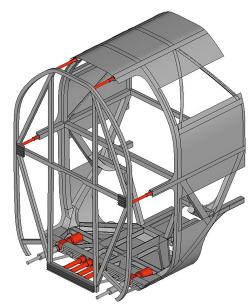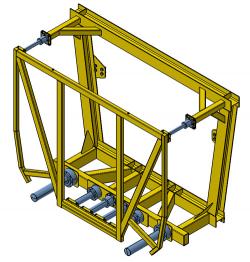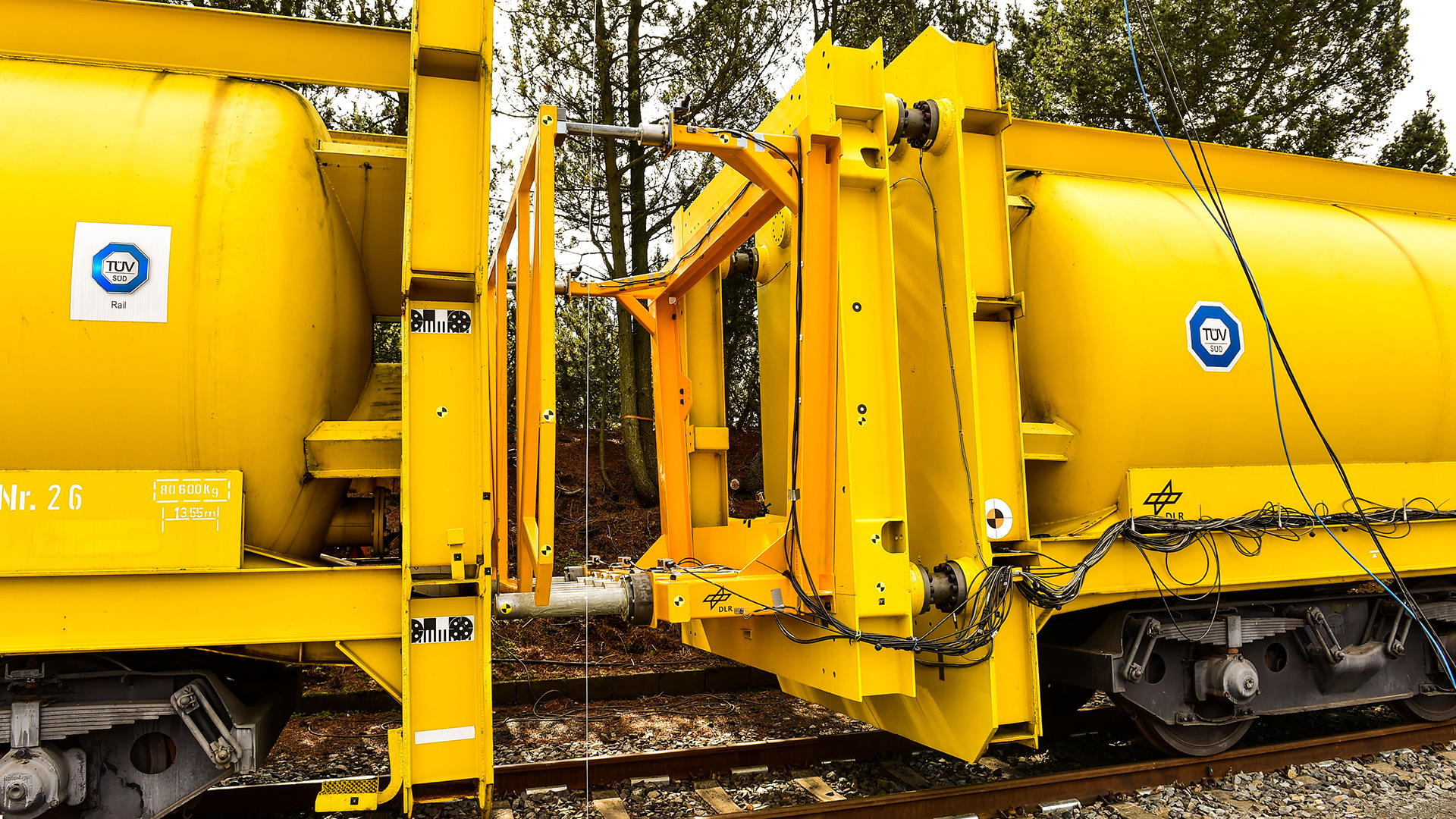Crash Concept
The Crash Concept of the Next Generation Train Intermediate Cars
In the NGT (Next Generation Train) project, the German Aerospace Center (DLR) is carrying out research into railway vehicles for future intermodal mobility. Crashworthiness is an important aspect of these innovative railway vehicles. With this in mind, the DLR has developed and demonstrated an innovative crash concept for the NGT intermediate cars, as part of a global crash concept for the whole trainset (picture 1).

One intermediate car crash module (picture 2) is located at the end of each car, which means a crash-zone consists of two mirrored crash modules.

Within these modules, energy absorbing devices operating on the principle of tapering tubes are used (picture 2, highlighted in red). The tubes of the crash absorbers are made of a alloy-steel which combines high strength with high ductility to make use of the absorbing principle as efficiently as possible. The goal is to create an efficient, lightweight, space-saving and structurally load-bearing crash concept for intermediate cars. Based on the results of the development, and in order to generate further findings, a full-scale demonstrator has been designed (picture 3), to validate the functionality of the crash-zone and to quantify the amount of energy absorption. The demonstrator design already includes suitable interfaces to existing test-wagons (adapted freight wagon with a mass of approximately 80 tonnes). Due to the approximately 4.4 m height of the double-deck NGT concept and the smaller height of the test wagon, a representative section of the crash module consisting of the lower frame and the mid floor level has been picked for the implementation of the demonstrator. The structural characteristics of the car end are represented in the demonstrator by a frame of I-beams on the rear side. This serves as an adapter when mounting the demonstrator to the load cells on the test wagon.

For the crash test, a further test wagon with a flat and rigid buffer was brought to test speed, colliding with the stationary test wagon on which the demonstrator was mounted (picture 4). The collision speed was 18.5 km/h. This is more than 50 % of the specified value given in EN 15227 (36 km/h). According to the standard this is sufficient for the validation of a crash module. The focus of the test is the verification of the energy absorption behaviour and energy absorption amount.
As a result of the test an energy amount of about 500 kJ was absorbed by the demonstrator, with the remaining compression length included as a safety buffer. During the test a stable deformation and energy absorption of the crash absorbers was shown.
The investigations showed that a crash module can absorb 750 kJ, which means a crash zone of an intermediate car consisting of two crash modules is capable of absorbing 1,5 MJ.

Experimental data was used to validate an existing crash simulation model of the NGT intermediate car crash zone. Thus it could be verified that an NGT intermediate car with an operating mass of 32 t equipped with these crash modules fulfils the requirements of the standard at a collision speed of 36 km/h. This approach leads the way for the development of future railway vehicle crash structures.
